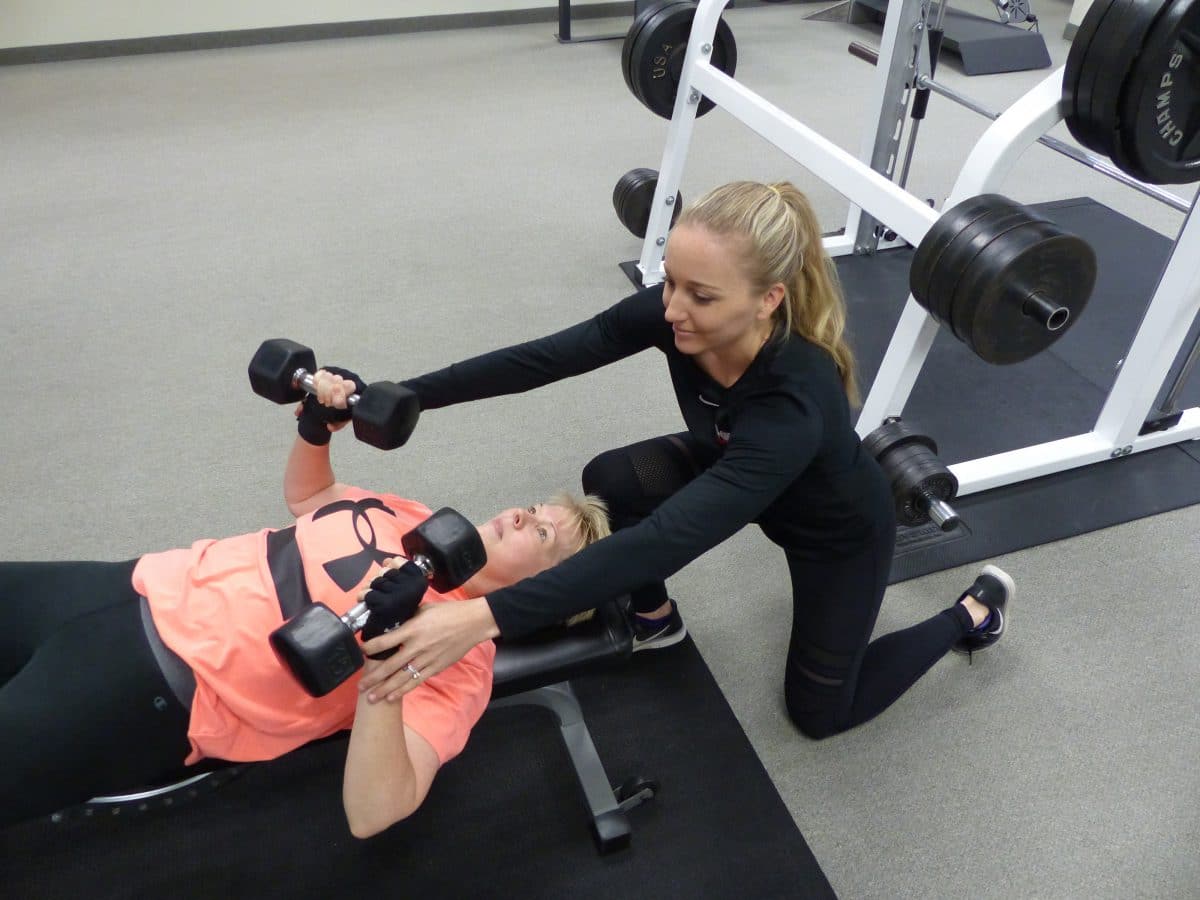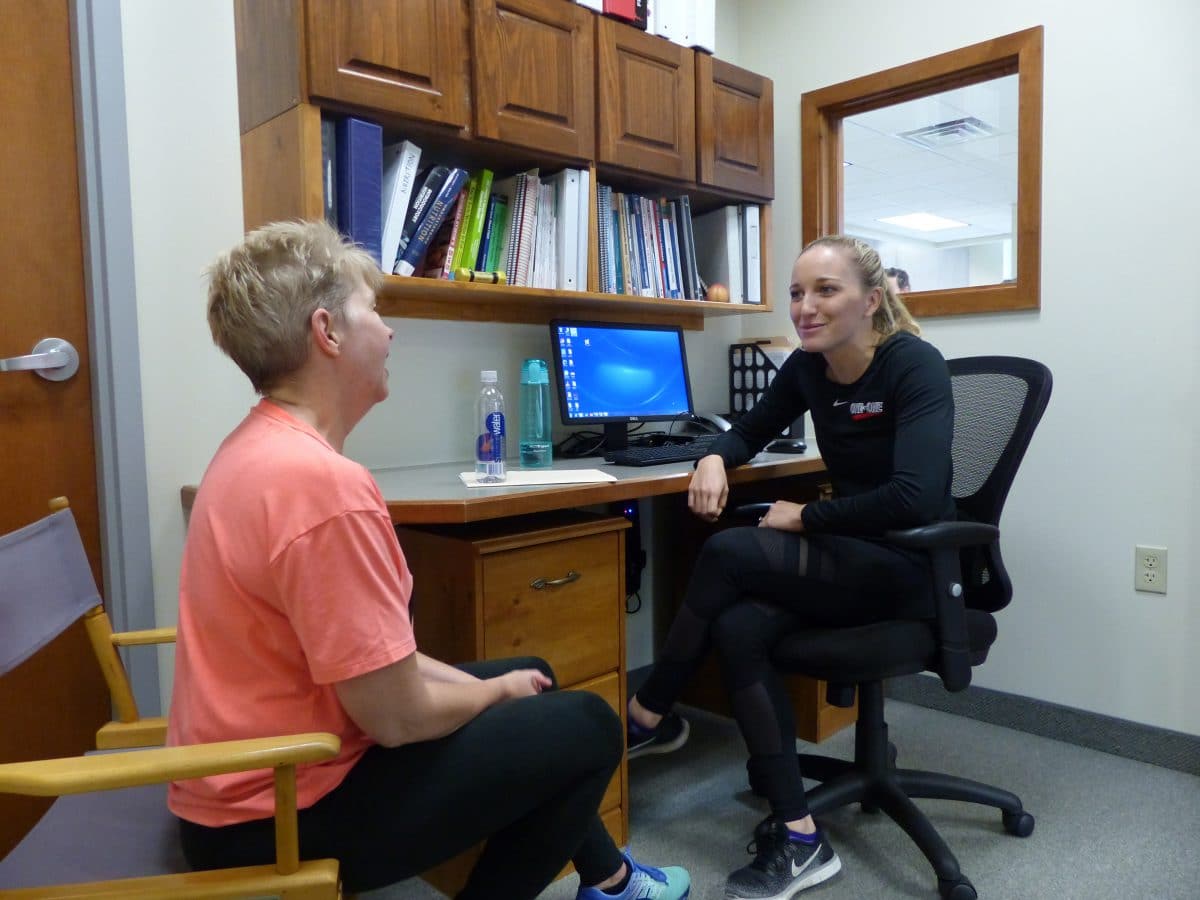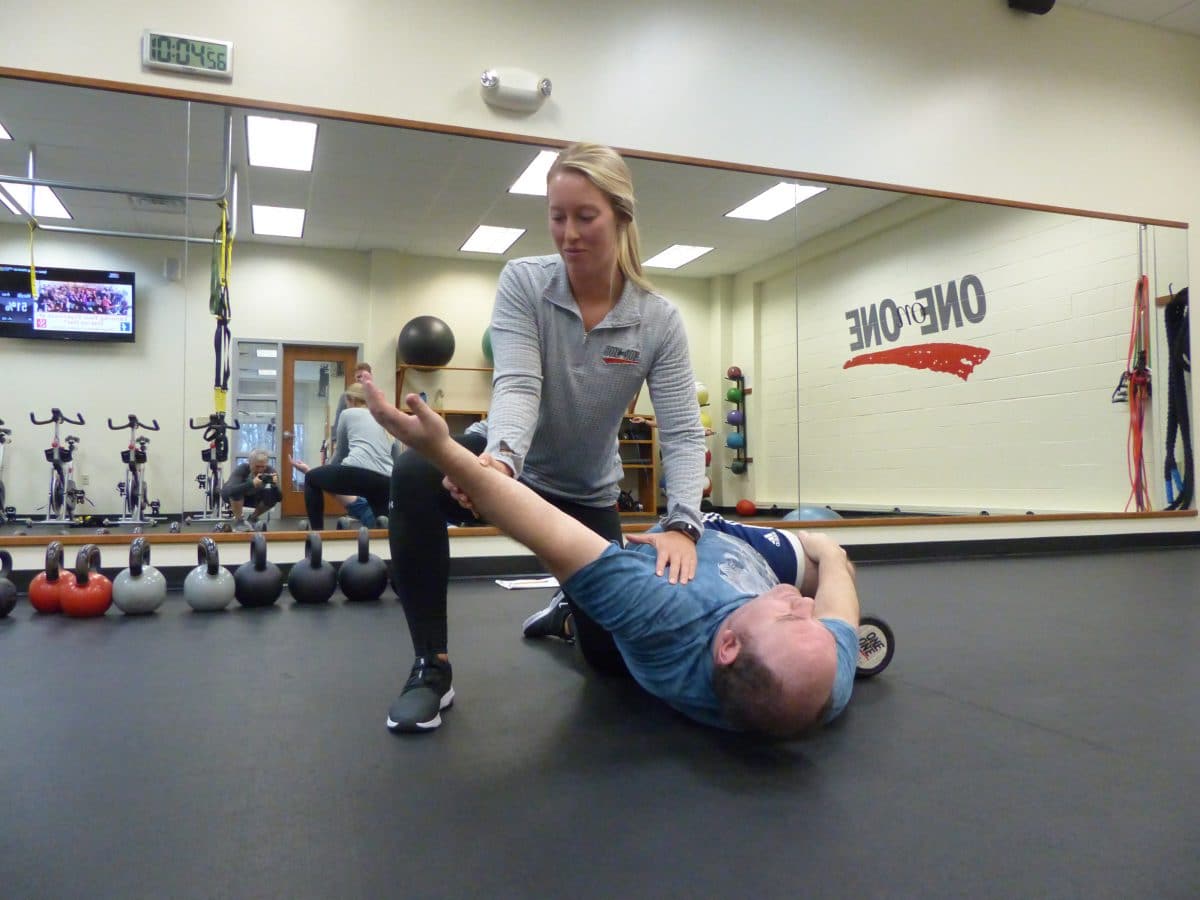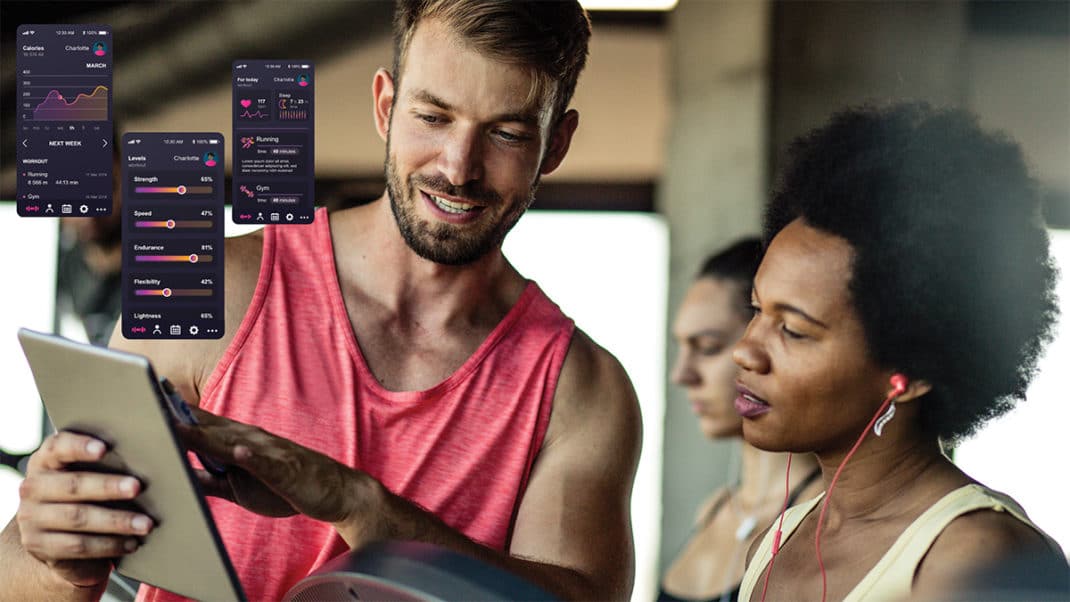The Nutrition–Fitness Hybrid: Bending the Model
Differentiate your gym or studio—while reinforcing sustainable client behavior change—by hiring RDs to counsel and train your clients.

What are consumers looking for when they come to your gym or studio? Sure, they want great workouts and access to the latest equipment in a welcoming, fun environment. But above all, they really want to attain their health and fitness goals.
At our gym—One on One Fitness in State College, Pennsylvania—we’ve learned that lasting, consistent client success depends on intelligent nutrition and habit-change strategies. Thus, we’ve pivoted from workouts to wellness to help clients succeed—and to differentiate our business. We focus on three areas: fitness, nutrition and lifestyle habits.
We’re making this happen with a new job title: the nutrition–fitness hybrid pro. We recruit registered dietitians who love fitness and then train them to be fitness professionals.
It’s an incredibly exciting opportunity for the right individual. These RDs interact with clients in ways that they wouldn’t normally, as clinical dietitians. Moreover, they help clients in ways that a dietitian or personal trainer, individually, could not.
“I became an RD because I have a passion for helping others,” says Haley Golich, RDN, LDN, a recent addition to our team at One on One. “The nutrition–fitness hybrid position enables me to promote healthy living, help clients set and achieve health goals, and contribute to the prevention of chronic disease. It is the ongoing interaction with clients that intrigued me the most.”
Advantages to This Professional Model
We employ four RDs and are recruiting more. Here’s what we’ve observed since implementing this strategy:
Our pool of hiring candidates is wider. Hiring/recruiting quality fitness professionals can be a significant challenge because it’s so hard to find that “gem” of a personal trainer who is competent, professional and (of course) looking for work. The nutrition–fitness hybrid position lets us recruit outside the pool of personal trainers and kinesiology students.
“When I went off to college, I couldn’t decide whether I wanted to study kinesiology or nutrition,” says Bethany Paszkowski, RDN, LDN, another member of our team. “They both interested me and both would allow me to achieve my longer-term goal of helping people. This position is perfect for me.”
RDs have advanced skills. When hiring an RD, you’re getting someone who is dynamic, smart and organized. Five years of vigorous education forces a person to develop many of the professional skills required to succeed in this role. Although RDs don’t have a degree in kinesiology, they quickly develop an intellectual understanding of the science and prove that they can consistently apply it in a fitness setting. Bottom line: You’re not hiring a “project.”
RDs enjoy career satisfaction. This position has a strong allure for the right kind of RD. After all, RDs rarely encounter so much diversity in their tasks and such a committed client base in clinical or community nutrition jobs. “I’ve worked as a registered dietitian in both the public health and clinical settings. These settings can be challenging to impact change,” says Golich. “By combining nutrition counseling along with fitness consulting, I am able to impact clients in a comprehensive way to elicit the most positive change.”
It’s easier to turn RDs into trainers than vice versa. Teaching RDs about fitness is a time-consuming but straightforward process. Conversely, dietetics is a complicated, multifaceted subject that will soon require a master’s-level education. Thus, the model works only if you start by hiring RDs. Turning trainers into RDs is rarely achievable.
The investment will pay off. RDs are used to making a healthy salary, so you will have to pay them competitively. You will have difficulty competing against the pay of a clinical setting. However, we don’t try. Instead, we attract people strongly motivated to engage in our holistic wellness opportunity. We provide a 5-week training program whose value is clear to the people we hire. They recognize that our team will teach them a trade and that we’ve made an investment in them—knowing we won’t see a return until well after they start.
How the Nutrition–Fitness Model Improves Your Business
In a competitive marketplace, fitness businesses have to differentiate themselves and generate new sources of revenue. In our market, a lot of gyms and clubs are doing the same things: offering different spins/pricing on group training and selling supplements. Although many businesses succeed tremendously on this path, we think the competition will only get stiffer.
We believe that creating a one-stop shop focusing on fitness, nutrition and habit change is a win-win that helps our business while giving our clients the best opportunity to succeed. We hired our first full-time RD in 2015, and our nutrition program became profitable after about a year, mainly through individual counseling sessions.
Some of the most significant benefits are intangible. Having RDs on staff clearly differentiates us from our competitors and solidifies our position as leaders in our field. RDs also get nutrition clients interested in fitness, educate our community and contribute to our social media updates.
How Health Insurance Coverage Drives Revenue
Once you have an RD in-house, you are eligible to receive third-party payment for nutrition counseling. Dealing with the added administrative work of health insurance reimbursement can be a challenge, but it’s worth it. Third-party payment reduces a barrier to entry for people and makes it easier to take advantage of nutrition services on an ongoing basis.
Nutrition counseling also introduces you to clients who may not have come through your doors otherwise. After clients have a great experience with an RD and see firsthand who you are and what you do, they’re more likely to try one of your fitness programs. At the very least, they’ll leave with a favorable impression of your brand.
Building Community With Innovative Programming
Hiring RDs opens up a new world of programming and community-building opportunities, such as
- educational experiences at your facility, local businesses and charitable organizations, and through Facebook Live
- grocery store tours (surprisingly popular)
- “RD Kitchen” (biweekly educational blog posts and taste tests)
- a cookbook with RD-approved recipes from your clients
Additionally, we had our clients purchase copies of the cookbook by writing $25 checks straight to two local charities—pretty cool!
We are most excited about a 6-week program we’re developing called “Healthy Habits.” We intend to have our nutrition–fitness hybrid pros lead groups of 6–8 people from similar demographics who [will] receive nutrition and fitness education. For our first two groups, we intend to appeal to young women aged 16–22. In addition to providing clients with education and fitness training, we also hope to create a network of peer-to-peer support, which will provide accountability and inspiration that will help these people for the rest of their lives.
This is the kind of initiative that really gets our nutrition–fitness hybrids excited!
When high-school senior Haley Givens came to One on One a year ago, she just wanted to lose weight. Other gyms and diets hadn’t worked out.
“I tried a diet called Nutrimost® and lost nearly 40 pounds, but I was tired and completely miserable. Plus, I gained most of it back,” she recalls. Givens started our “Take Charge!” 12-week nutrition program and began training three times per week.
Fast forward to today. Givens trains three times per week by appointment (twice with a nutrition–fitness hybrid, once with a personal trainer) and twice a week independently. She also has regular nutrition counseling sessions. She has lost weight and learned how to fuel herself properly, and now she consistently maintains a healthy and enjoyable diet.
“I think one of the reasons I haven’t been this successful in the past is that there would be tradeoffs,” says Givens. “I would either be losing weight and hungry or I would be happy eating the things I liked, but not able to lose any weight. Now, I get a perfect balance of those things, which is why it doesn’t feel like a diet but more like a lifestyle change.”
Kelly Combs, RDN, LDN, one of our nutrition–fitness hybrid pros, says working with people like Haley is exactly what she signed up for.
“I am so grateful for the opportunity to work with Haley on both her nutrition and her fitness. I really think that much of our success comes from having such frequent interaction,” Combs says. “Our weekly training sessions provide an added layer of accountability and allow us to follow up on the big-picture issues we address in our counseling sessions, such as sleep and stress. It gives me a unique opportunity to understand her daily challenges and really get to know her.”
Making the commitment to holistic wellness, rather than simply workouts, creates lasting success and is unbelievably satisfying.
“I trust everyone at One on One,” says Givens. “I know that they all are trying to help me not only lose weight but feel good about myself. I think that is what sets them apart. Every time I go, I leave feeling happier and better about myself.”
Developing a team of nutrition–fitness hybrid professionals starts with hiring the right RD. Your candidates must have a strong desire to improve people’s lives and must be truly passionate and inquisitive about fitness.
Once you have found the right people, you have to train them.
“We realized over 20 years ago that if we were going to be successful, we needed to train our staff ourselves,” says Bruce Burke, One on One’s founder. “Our training program has evolved to a point where we can train anyone to deliver an excellent fitness experience.”
This is a significant investment, but it’s worth it. Indeed, we train all new team members, regardless of background. The program takes approximately 200 hours and focuses on these areas:
Science. We give candidates study materials and test them from day one.
Skill. This section is divided into modules covering the following topics:
- parameters of the exercises themselves
- safety and troubleshooting techniques
- corrective exercise concepts
- periodization and program design for various populations
- weight loss training strategies
Art. The delivery of these skills is most important.
Communication. We emphasize effective listening, speaking and relationship-building skills.
Purposeful cuing. We teach methodology for enhancing a client’s ability to perform a movement.
Motivation. We employ creative strategies for helping clients meet and maintain their goals.
Most of the time should be spent working on delivery. Always involve a knowledgeable team member in the practice or observation. Every practice session and observation should be purposeful and include a formal critical analysis afterward. This is obviously an investment, but it is also a high-leverage activity. Simple observation, while easier and less costly, is not.
In addition to a comprehensive training program, you should support your RDs in maintaining an active personal training certification. At One on One, we cover the cost of certification for noncertified team members, provide a continuing education benefit for CECs and have a CEC-approved training course.
Finally, nothing contributes to the success of a fitness professional like being an excellent communicator. RDs spend a significant amount of time learning motivational interviewing techniques that help them become inspiring, results-oriented professionals.

DIFFERENTIATE YOUR BUSINESS
Haley Golich, RD, training a client. Turning RDs into personal trainers is a significant invest┬¡ment, but it’s worth it, says One on One Fitness owner Bruce Burke. The program takes approximately 200 hours.

ELEVATE YOUR OFFERINGS
Haley Golich counseling a nutrition client. We believe that creating a one-stop shop focusing on fitness, nutri­tion and habit change is a win-win that helps our business while giving our clients the best opportunity to succeed.

BEND THE MODEL
Bethany Paszkowski, RD, training a client. When hiring an RD, you’re get┬¡ting someone who is dynamic, smart and organized. Five years of vigorous education forces a person to develop many of the professional skills required to succeed in this role.
CHANGE YOUR MESSAGING
Clients start with the mindset that their workouts will help them achieve their goals. Adding RDs to your staff can prove that you deliver much more! You can reshape client perception with a consistent wellness message.
“As important as the Xs and Os of nutrition are, we place an even higher premium on mindset and behavior change,” says Paige Whitmire, RD, LDN, One on One’s nutrition program director.
Consider also promoting these themes to clients:
- putting themselves first
- believing they always have choices; they are not victims
- practicing acceptance
- gratitude versus deprivation (What are they really sacrificing when they eat right?)
To succeed, you must communicate your themes effectively. Start by getting your whole team on board, and then focus on other communication channels, such as social media or blogging. It is incredibly powerful for a client to regularly receive key wellness messages addressing attitudes, beliefs, motives and goals from a team of caring professionals.





